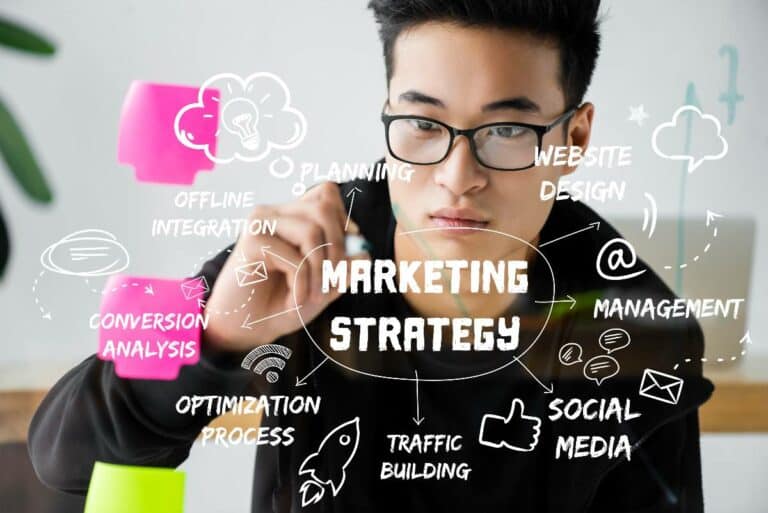Are you looking for the best way to maximize the impact of your email campaigns? Do you want to take advantage of the latest trends and technologies in order to reach more customers, increase engagement, and boost sales? If so, you’ve come to the right place! Email marketing is one of the most powerful tools available today, offering businesses valuable insights into their customer base while providing an effective method for communicating with them.
In this blog post, we’ll explore what’s next in email marketing – from new strategies for optimizing your campaigns to using modern technology such as AI and machine learning. By understanding these innovative methods and putting them into practice, you can stay ahead of the curve and create dynamic content that stands out from all other emails in customer inboxes. Keep reading for everything you need to know about harnessing tomorrow’s potential with modern email marketing today.
According to the latest report by Statista, it has been projected that by the year 2025, the number of global email users is expected to reach a staggering 4.6 billion. With such a massive user base, it is evident that email as a communication medium holds immense potential for brands aspiring to connect and engage directly with their target customers.
Key Takeaways
- Technological advancements, including AI and predictive analytics, will play a significant role in shaping the future of email marketing, offering opportunities for increased personalization and automation.
- The future of email marketing will not be without challenges. Issues around data privacy and security, as well as the need to overcome ’email fatigue’, will be central to the discussions.
- Businesses need to adapt by embracing new technologies and committing to continuous learning and adaptation. Balancing automated processes with a personal touch will be key for future success in email marketing.

The evolving landscape of email marketing
Technological Advancements Influencing Email Marketing
Email marketing, once viewed as a simple, direct way to reach consumers, has transformed dramatically as a result of various technological advancements. It has evolved from simple text-based messages to an artful blend of content, design, personalization, and automation.
- Artificial Intelligence (AI): AI technology is now being used in email marketing to optimize various facets of campaigns, including content creation, segmentation, and timing of delivery. For example, AI can analyze user behavior and data points to predict the optimal time to send an email to an individual user, thereby increasing the chances of the email being opened and read.
- Machine Learning (ML): Building on AI, ML algorithms are transforming how email campaigns are personalized. By learning from patterns in data, these algorithms can predict consumer behavior and tailor email content to individual users. This enhances the relevance of emails, leading to increased engagement rates.
- Automation: Email marketing automation has improved efficiency by reducing the need for manual tasks. For instance, marketers can now set up automatic email responses based on specific triggers like a new subscription or an abandoned cart, ensuring timely interaction with consumers without human intervention.
- Interactive Emails: Thanks to advancements in HTML and CSS, emails have transformed from static messages to interactive experiences, with embedded videos, surveys, and even shopping experiences right within the email itself. This technology has made emails more engaging, and can significantly increase click-through rates.
- Advanced Analytics: Real-time analytics have provided marketers with unprecedented insights into email performance. These tools can track open rates, click-through rates, and even how long a recipient spends reading an email. This data helps in refining strategies and making data-driven decisions to improve campaign effectiveness.
Changing Consumer Behaviors
Consumer behaviors and expectations have significantly evolved in parallel with the changes in email marketing technology.
- Demand for Personalization: Today’s consumers expect more than generic messages. They want personalized content that aligns with their interests and needs. For example, if a consumer has been browsing outdoor hiking gear on a website, they would appreciate receiving an email showcasing a selection of popular hiking gear, tailored hiking tips, or special offers on related items.
- Mobile Optimization: With the surge in smartphone usage, more and more consumers are checking their emails on mobile devices. Hence, it is essential for email campaigns to be optimized for mobile, ensuring the layout and content display correctly on smaller screens.
- Privacy Concerns: Increasing awareness around data privacy has led consumers to be more cautious about sharing personal information. Therefore, transparent communication about how consumer data is used and stored has become crucial in building and maintaining trust.
- Attention Spans: In today’s fast-paced digital world, consumers have shorter attention spans. Therefore, emails need to be concise, engaging, and visually appealing to capture the attention of readers quickly.
- Consumer Autonomy: Modern consumers value control over their email inboxes. Providing options like email preferences, frequency of communication, and easy unsubscribe options can help enhance the user experience and respect their autonomy.
The landscape of email marketing is continually evolving. To succeed, marketers must stay abreast of technological advancements and adapt to changing consumer behaviors. By doing so, they can deliver relevant, engaging, and personalized email content that resonates with consumers and drives results.
The Future of Email Marketing
Predicted Trends in Email Marketing
As we look into the future of email marketing, several trends are predicted to shape the landscape and continue to evolve the field:
- Hyper-Personalization: Personalization in email marketing will go beyond merely using the recipient’s name. Marketers are predicted to leverage data more strategically to deliver highly personalized content, offers, and recommendations tailored to individual preferences, behaviors, and previous interactions.
- Interactive Emails: The trend of interactive emails is set to soar, with more marketers embedding interactive elements like quizzes, surveys, videos, and clickable content directly into their emails. This aims to boost user engagement and create a more dynamic, immersive, and interactive user experience.
- Voice-Assisted Email: As voice assistants like Amazon’s Alexa and Google’s Assistant become more ubiquitous, the ability to compose, send, and read emails via voice commands will likely become a significant trend.
- Dark Mode Compatibility: With many applications and devices offering a ‘dark mode’ option for better visual comfort, it’s predicted that marketers will need to ensure their emails look equally good in both light and dark modes.
Importance of Personalization in Email Marketing
Personalization is no longer a nice-to-have feature in email marketing; it’s an expectation. Consumers are more likely to engage with emails that resonate with their personal interests, preferences, and recent activity:
- Boosts Relevance: Personalized emails create a sense of relevance for the reader, making them feel valued and understood, which in turn encourages engagement and interaction with the email content.
- Enhances User Experience: Personalization improves the user experience by delivering content that is catered to the individual’s needs, which can lead to increased brand loyalty and conversion rates.
- Improves Performance Metrics: Studies have shown that personalized emails significantly improve key performance metrics, including open rates, click-through rates, and conversion rates.
AI and Automation in Email Marketing
AI and automation are becoming increasingly important in email marketing, simplifying processes and allowing for more sophisticated campaigns:
- Improved Segmentation: AI can analyze vast amounts of data to create precise and effective segmentation, improving the accuracy of targeting in email campaigns.
- Automated Campaigns: Automation allows for the creation of complex, trigger-based email campaigns. For example, when a consumer abandons a cart, an automated email can be sent to remind them to complete the purchase.
- AI-Driven Content Creation: AI tools can help with content creation, such as generating catchy subject lines or recommending content based on users’ past behavior, enhancing the effectiveness of emails.
D. Predictive Analytics in Email Marketing
Predictive analytics use historical data, statistical algorithms, and machine learning techniques to identify the likelihood of future outcomes, which is proving to be very useful in email marketing:
- Predicting User Behavior: With predictive analytics, marketers can anticipate user behavior, such as identifying when a user is most likely to open an email, which can inform optimal send times.
- Churn Prediction: Predictive analytics can also help identify users who are likely to unsubscribe or disengage, allowing marketers to proactively address these issues with targeted strategies.
- Forecasting Sales: These analytics can also assist in forecasting sales and revenues from email marketing campaigns, aiding in more accurate planning and decision-making.
The future of email marketing will be largely shaped by personalization, AI, automation, and predictive analytics. These elements will contribute to creating more targeted, engaging, and effective email campaigns, driving stronger relationships between brands and their consumers. Marketers who embrace these trends will be better equipped to meet the evolving expectations of their audience and stay ahead in a competitive landscape.
Potential Challenges
Data Privacy and Security Concerns
As email marketing continues to become more sophisticated, several challenges around data privacy and security are likely to arise:
- Data Protection Laws: With laws such as GDPR in Europe and CCPA in California, marketers need to ensure that their email marketing practices comply with these regulations. These laws mandate clear consent from users before collecting their data and provide users with the right to know what data is being collected, how it’s used, and the ability to opt-out.
- Data Breaches: Data breaches pose a significant risk, with potential consequences including loss of trust, financial penalties, and damage to brand reputation. Marketers need to employ robust security measures to protect customer data, including encryption, secure access controls, and regular security audits.
- Phishing Attacks: Email marketing can inadvertently become a vehicle for phishing attacks, where malicious actors impersonate a brand to deceive users into revealing sensitive information. Marketers need to take steps to ensure their emails are secure and educate their consumers on how to spot and report phishing attempts.
Overcoming Email Fatigue
Email fatigue is another challenge that marketers face. As consumers are bombarded with numerous emails every day, it’s becoming more difficult for brands to stand out and engage their audience:
- Frequency of Emails: One of the main causes of email fatigue is the high frequency of emails sent by brands. Marketers need to find the right balance in their email frequency to avoid overwhelming their consumers and prompting them to unsubscribe.
- Relevancy of Content: Sending irrelevant content can also contribute to email fatigue. To overcome this, marketers need to leverage user data to tailor their content to each recipient’s interests and needs, thereby making their emails more relevant and engaging.
- User Control: Providing users with control over their email preferences can help in combating email fatigue. This could include allowing users to choose the frequency of emails, the type of content they want to receive, and easy options to unsubscribe.
While email marketing offers numerous opportunities for reaching and engaging consumers, marketers also face several challenges. Addressing data privacy and security concerns and overcoming email fatigue is crucial to running effective and sustainable email marketing campaigns. By tackling these issues head-on, marketers can build trust, respect their audience’s preferences, and create a more positive email experience for their consumers.
Also, in your line of business, I wanted to share with you an article that I recently wrote titled “Your Business Deserves Better: A Comprehensive Guide to Creating a Content Calendar.” This guide provides valuable insights and practical tips on how to effectively plan and organize your content strategy for optimal results.
I believe that implementing a content calendar can truly revolutionize the way you manage and deliver your business’s content, ultimately helping you achieve greater success in your industry. I encourage you to take a moment to check out the article and see how it can benefit your business.
How businesses can prepare for the future of email marketing
The world of digital marketing is ever-evolving, and email marketing, an effective and crucial email marketing strategy for businesses of all sizes, is no exception. Understanding and adapting to emerging trends and innovations can ensure the continued effectiveness and relevance of your email marketing campaigns. Here’s how big and small business owners can prepare for the future of email marketing.
Embracing New Technologies
- Advanced Segmentation Tools: The ability to segment your audience based on their behaviors, preferences, and engagement levels can significantly enhance the effectiveness of your email marketing. With advanced AI-powered segmentation tools, businesses can create more targeted and personalized emails, ensuring the right message reaches the right person at the right time. For example, consider a clothing retailer that uses AI to segment its customers based on purchase history, browsing behavior, and responses to previous marketing emails. This allows them to send personalized emails featuring products the customer is likely to be interested in, enhancing the chances of conversion.
- Interactive Emails: Technologies that support interactive email content will gain more popularity in the future. These emails can include interactive elements such as surveys, quizzes, or embedded videos, which can significantly increase engagement and click-through rates. For instance, a travel agency might include an interactive quiz in their emails to help subscribers determine their next vacation destination, effectively engaging them and increasing the chances of booking.
- Artificial Intelligence and Machine Learning: AI and machine learning can provide valuable insights into customer behavior, automate tedious processes, and even help craft more compelling subject lines or content. For instance, a food delivery company could use AI to analyze past order history and time of order, enabling them to send targeted emails at the precise moments when a customer is most likely to be contemplating their next meal.
Importance of Continuous Learning and Adaptation
- Staying Updated with Industry Trends: Like any other aspect of digital marketing, email marketing trends and best practices are always evolving. Businesses need to stay informed about these changes and be willing to adapt their strategies accordingly. This could mean participating in webinars, attending industry conferences, or regularly reading thought leadership articles and reports.
- Regular Testing and Analysis: It’s important to continuously monitor the performance of your email campaigns, conducting A/B testing on various elements such as subject lines, call-to-actions, and content layout. By understanding what works best for your audience, you can adapt and optimize your future emails, ensuring that they are always effective and engaging.
Balancing Automation and Personal Touch
- Automation for Efficiency: Email automation can be a game-changer for businesses, enabling them to send relevant emails to their customers at exactly the right moment without manual effort. This could include welcome emails, cart abandonment reminders, or personalized product recommendations. However, it’s crucial that automation doesn’t lead to generic, impersonal communications.
- Personalization for Connection: Despite the convenience of automation, it’s essential to retain a personal touch in your emails. This could mean addressing recipients by their first name, referencing their past interactions with your company, or tailoring content to their specific interests and needs. Personalization can significantly increase the chances of your emails being opened and read, fostering a deeper connection with your customers. For example, a fitness platform could send personalized workout plans based on a subscriber’s past activity and fitness goals, making user-generated content, and making the user feel valued and understood.
Preparing for the future of email marketing involves a balance of embracing new technologies, committing to continuous learning and adaptation, and striking a balance between automation and personal touch. By doing so, businesses can ensure their email marketing efforts continue to drive engagement, build customer relationships, and deliver a significant return on investment.

The Future of Email Marketing FAQs
How is predictive analytics shaping email marketing?
Predictive analytics is an AI-powered technology that uses data and machine learning algorithms to predict customer behavior. This can be used by businesses to send targeted emails at the precise moments when a customer is most likely to open and engage with them. For example, predictive analytics can help online retailers identify customers who are likely to make an immediate purchase and send them a personalized email featuring a relevant product.
How can businesses adapt to the evolving email marketing landscape?
Businesses should stay informed and up-to-date on the latest email marketing trends and best practices. This could involve attending webinars, reading thought leadership articles and reports, or subscribing to industry newsletters. Additionally, they should continuously monitor their email campaigns and conduct A/B testing to understand what works best for their audience.
How will data privacy and security concerns impact email marketing?
Data privacy and security concerns are becoming increasingly important in the world of email marketing. As such, businesses must ensure they comply with all relevant laws and regulations when collecting and processing customer data. They should also take steps to protect their customers’ information, such as using encryption techniques or anonymizing data where possible.
What can be done to overcome ’email fatigue’?
Email fatigue is a common problem, especially among frequent email users. To combat this, businesses should ensure their emails are sent at the right moment and contain relevant content for each recipient. Additionally, they should take steps to reduce the number of emails they send by segmenting their lists and using automation to target customers with personalized messages.
How can a balance be achieved between automation and personalization?
To successfully strike a balance between automation and personalization, businesses should utilize automated emails to send timely and relevant messages at the right moments. At the same time, they should ensure their emails still have a personal touch by addressing recipients by name, referencing past interactions with them, or tailoring content to their specific interests and needs.
Conclusion
As we’ve established, the future of email marketing is an exciting one with a whole host of possibilities. With the help of new technologies, businesses can create engaging and interactive emails that benefit customers and reach goals. However, companies should remain aware of potential issues surrounding data privacy and security as well as email fatigue.
Ultimately, striking a balance between automated processes and a personal touch that speaks to each customer individually will be the key takeaway for email marketers from now on. If businesses can keep their finger on the pulse of these trends and take action accordingly, there are no limits to what they can achieve for their business’s success.
Of course, getting started is half the battle! If this post sparked your interest in learning more about how to capitalize on the power of email marketing for your own business, why not schedule a free strategy call today? We’d love to help you get set up for success!






